York City Walls |
|
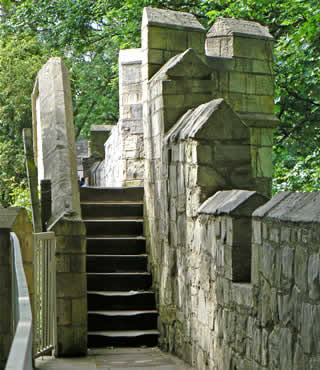 |
|||
The biggest and best city walls in the country |
||||||
Listen to this article |
||||||
|
||||||
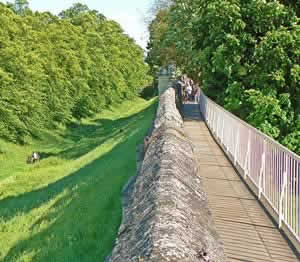 |
||||||
When the Romans arrived here in the first century, they found a river, some soil, and not much else. They decided it would be a good location for a military fort, and so they set to work. Before long, it was finished - and that's when the people began to arrive. The area quickly turned into a large town, known as Eboracum ... and of course, the town needed protecting. So the Romans built a wall. |
||||||
This was nearly two millenia ago now. And since then, as the town grew, so did the walls. They have been enlarged or reinforced in almost every era throughout their history, and today, they are the biggest and best example of their kind in the country. In fact, over a million people per year enjoy walking the 2.5-mile circuit, which encloses a huge 263 acres of land. That's bigger than 200 football pitches! |
||||||
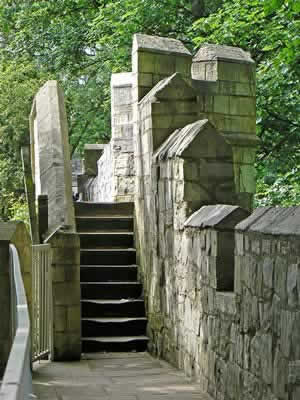 Part of the City Walls |
||||||
As they walk, visitors can examine the many plaques along the route, which give interesting information about the history of the structure. These were installed as part of a 2006 project to encourage more people to complete the entire circuit. It certainly seems to be working - in a recent poll, York residents listed a stroll along the walls as their number one leisure activity. |
||||||
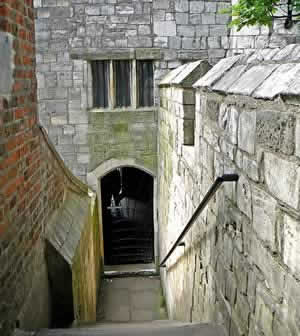 Steps down into Bootham Bar |
||||||
The most impressive parts of York's defences are its 4 main gatehouses - known as bars. Monk Bar is the biggest of these, containing an entire four storeys. It was designed as a stand-alone fortress, so each of its floors can be defended separately. |
||||||
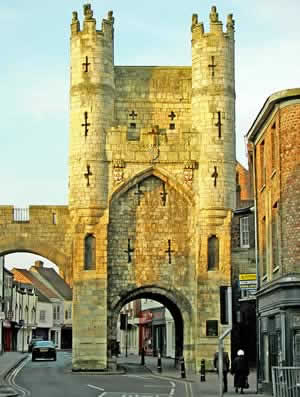 Monk Bar Photo chelmsfordblue2 |
||||||
Bootham Bar, meanwhile, contains some of the oldest stonework in any part of the wall. But if a war breaks out, and you need to find somewhere safe, Walmgate Bar is the place to be. It has the only remaining barbican tower on an English town gate, as well as a working portcullis! You could lock the large oak doors, and relax within the Elizabethan house just inside the gateway. Before you make yourself too comfortable in here though it might be worth considering that over the years, Walmgate has been climbed, hammered, rammed, shot at with cannons, and set on fire! |
||||||
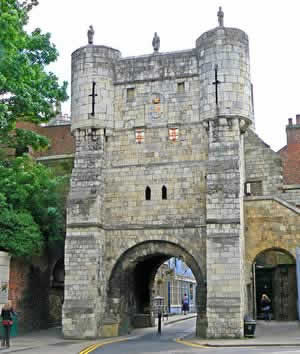 Bootham Bar |
||||||
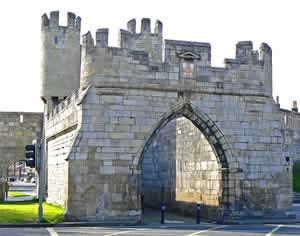 Walmgate Bar |
||||||
The last of the Bars is Micklegate. This is the traditional entrance for monarchs entering the city. As they stepped through the rectangular gatehouse, they would touch the state sword - a ceremony begun by Richard II in 1389. They would then proceed down Micklegate road itself, cheered by crowds of people. Of course, nowadays, the crowds are there for an entirely different reason. The street has since become popular for its bars and clubs, and most nights you'll see people embarking on another kind of procession - a lengthy pub crawl known as Micklegate Run. Although, if you're planning on taking this approach, try to behave! In the past, the authorities used to deter rebellion by catching notorious criminals, chopping off their heads, and displaying them for decades on top of the gatehouse! |
||||||
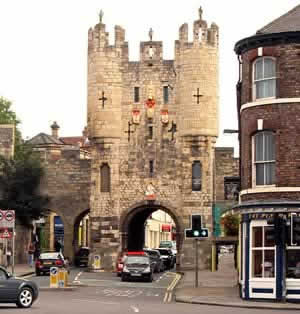 Micklegate Bar Photo di the huntress |
||||||
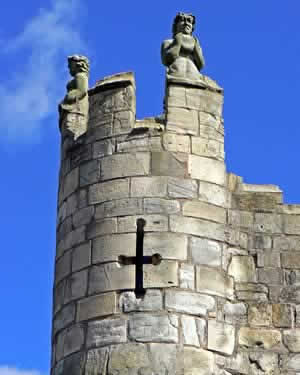 |
||||||
Of course, this is unlikely to happen to you, so just try and enjoy your walk. York's walls are one of the most impressive sights in the city, and they fully deserve their status as a Grade-I listed building. |
||||||
|
||||||
The city walls are open 8am to dusk. Entry is FREE. |
||||||
|
Pocket Britain is optimised for use on a smartphone or tablet with internet access. All content is subject to copyright. All reasonable methods have been used to ensure information supplied is accurate at the time of publication. However, it is advisable to check information before relying on it. Privacy Policy |